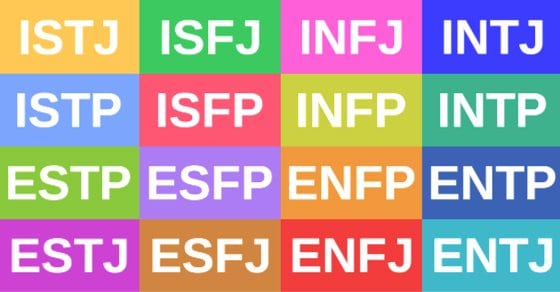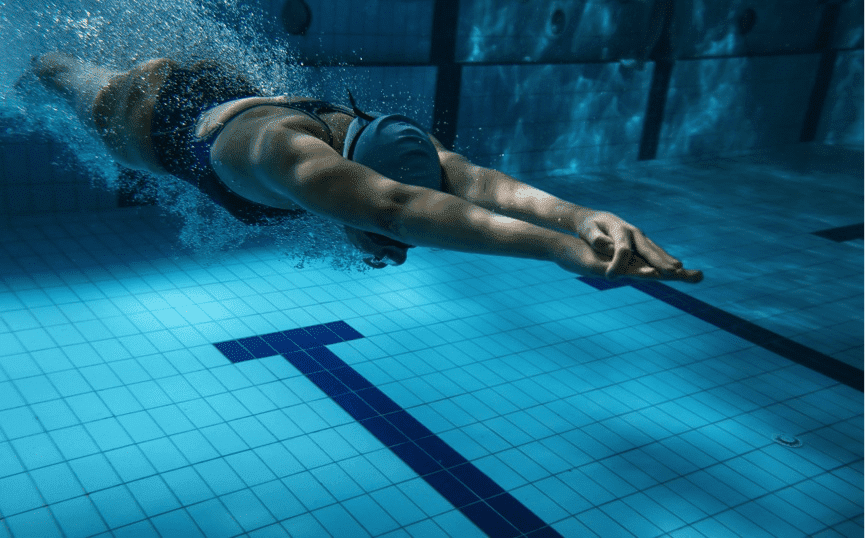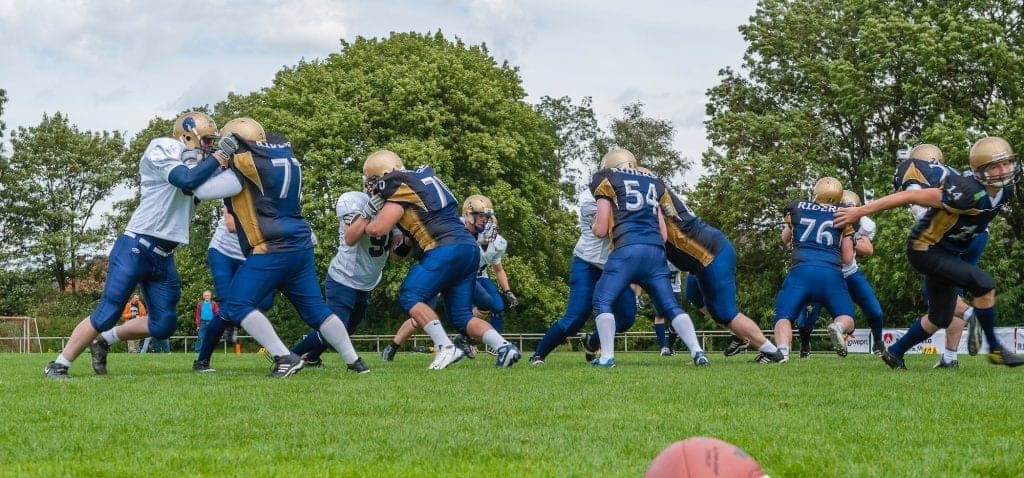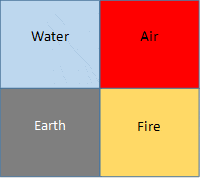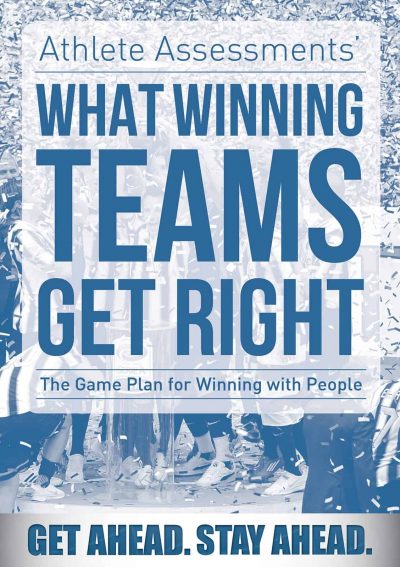Which “Four Letter Word” is More Useful in Sport
While there is a little humor in the title of this article, at Athlete Assessments we believe it’s always best to share knowledge. We are regularly asked about the different types of profiling, assessments, and other development tools available in sport (and business) and how they compare to our own use of the DISC Assessment. Most commonly, we are asked to compare MBTI and DISC.
(Firstly, I should disclose that I am trained and accredited in the use and administration of the Myers-Briggs Personality Type Indicator, DISC Profiling, Emotional Intelligence (Emotional Competence Inventory 360), and numerous other assessment and development tools.)
There is quite a lot of contradictory and confusing information out there. Our aim is to answer your questions to ensure you are well informed about the different types of profiling, their advantages and disadvantages, and why they may or may not work in the context of your team or business. (Of course, this is based on our own extensive experience and may differ to others.)
In this article, we delve into the Myers Briggs Type Indicator (MBTI), firstly “in a nutshell” for those with limited time, and then in more depth for those wanting more information.
Compare MBTI and DISC in A Nutshell
The Myers-Briggs Type Indicator, also referred to as the Myers-Briggs Personality Type Indicator and abbreviated to MBTI, is most often associated with measuring an individual’s personality type. To use the MBTI, you complete a questionnaire which places you into one of 16 personality types, none of which are considered “better” than any of the others.
The Myers-Briggs Type Indicator assesses your personality through four dimensions which each have two options. The dimensions are Extroversion and Introversion (E/I), Sensing and Intuition (S/N), Thinking and Feeling (T/F), and Judgment and Perception (J/P). People lean towards one in the pair rather than the other, you can’t be both or sit in the middle. Your personality type is then indicated through a four letter code which demonstrates which of each pair you leant towards in the four dimensions. So your code can be ESTJ, or INTP or any of the 14 remaining combinations.
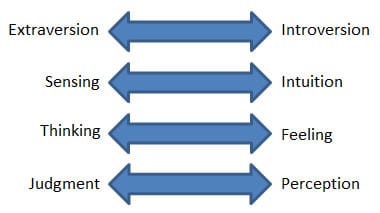
WHAT THE MYERS-BRIGGS TYPE INDICATOR IS:
MBTI is a psychometric tool. Psychometric tools aim to measure knowledge, abilities, attitudes and personality traits.
MBTI measures personality traits of which we all have these and they are normally considered stable by the time we reach 21 years of age.
It has four dimensions with each dimension having two options, resulting in a model with 16 different personality types.
We do not consciously aim to change our personality. These types of tests are considered to be more invasive as they go to the heart of who an individual is.
Most commonly, MBTI is used within a business context and some application in other fields. We are not aware of an MBTI specifically for sport, so a more general MBTI is used.
-
DISC is different in what it actually measures. DISC is a behavioral measurement. It measures how one behaves in a given environment, whilst also noting their preferred patterns of behavior. It does not measure personality.
-
Obviously personality plays a major role in how someone behaves, but DISC suggests one can change their behavior in order to obtain different/better outcomes.
-
DISC does not suggest you have to change your personality, just your behavior. We find this to be a critical factor in why DISC can deliver more useful outcomes for us in sport.
-
We never ask an athlete to change who they are, but coaches are constantly suggesting to an athlete how they can change their technique or behavioral approach to create better results.
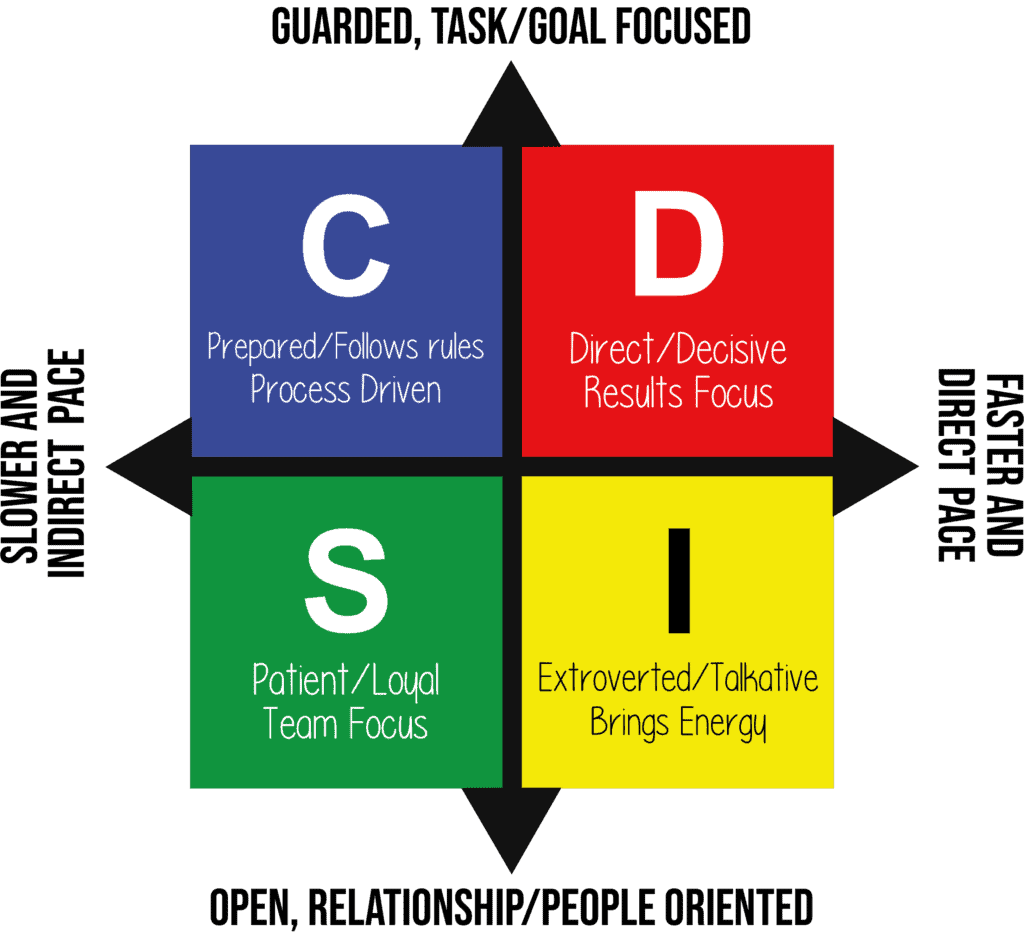
Ultimately, behavior is flexible, personality is not. Your DISC profile is never a prison which has to dictate everything you do. DISC aims to give you a choice of ways to behave each of which results in various outcomes depending on the situation.
With DISC you can delve deeply into the theory and its application, yet at its core is a four quadrant model that most people can quickly grasp the basics of, in only a few minutes. This is very important in sport, for coaches, athletes and others to quickly understand and remember.
The Athlete Assessments’ DISC Profiles are specifically tailored to sport and the roles within this context. There is the AthleteDISC for athletes and players, the CoachDISC for coaches and trainers and the Sports ManagerDISC for team managers, sports administrators and other sports professionals.
MBTI claims that certain personality types are more effective in roles such as leadership or certain personality types being more sporting than others. This is starkly different to what DISC is based on. DISC is grounded in the principle that there is a time and place for each profile when it comes to being a leader. No one behavioral style is going to work all the time. The same goes for being a successful athlete. We have some of the greatest athletes in the world on our database of clients and we can assure you, there is no pattern suggesting a D, I, S or C is more or less successful.
WANT TO KNOW MORE? READ ON…
The above is a simplified overview of the Myers-Briggs Type Indicator and its comparison with DISC, hence “In a Nutshell”. However using the topics below, you can develop a more in-depth insight into the topics related to the Myers-Briggs Type Indicator including:
- What is the MBTI?
- How is MBTI used?
- The History of MBTI
- The four dimensions of MBTI
- The advantages of MBTI
- The disadvantages of MBTI
Compare MBTI and DISC: What is the Myers-Briggs Type Indicator?
In essence, the Myers-Briggs Type Indicator is a questionnaire used to measure how people perceive the world, process information and make decisions in response to their environment. However, as previously stated, given it is a psychometric tool, the model is most often associated with measuring an individual’s personality type.
The MBTI assesses your personality through four dimensions which each have two options. The dimensions are:
Extroversion and Introversion (E/I),
Sensing and Intuition (S/N),
Thinking and Feeling (T/F), and
Judgment and Perception (J/P).
People lean towards one in the pair rather than the other, you can’t be both or sit half-way.
At the end of the questionnaire, you receive one of 16 possible ‘personality types’ based on your answers. None of these personality types are considered “better” than any of the others.
Your personality type is then indicated through a four letter code which demonstrates which of each pair you leant towards in the four dimensions. So your code can be ESTJ, or INTP or any of the 14 remaining combinations. Continue reading for more detailed information below under the topic “What are the Four Dimensions of the Myers-Briggs Type Indicator?”
How is the Myers-Briggs Type Indicator Used?
MBTI is a psychometric tool. Psychometric tools aim to measure knowledge, abilities, attitudes and personality traits. Like any profiling tool, the primary use of the Myers-Briggs Type Indicator is to increase self-awareness and improve interpersonal relationships. In a business setting this mainly includes understanding leadership, employee development and team building with existing employees. By increasing self-awareness, the Myers-Briggs Type Indicator can help ascertain the cause of problems in relationships, and therefore assist individuals in getting along more effectively. This is a very similar application as DISC has.
What is the history of the Myers-Briggs Type Indicator?
The Myers-Briggs Type Indicator originates from the theories of Dr. Carl Jung developed early in the twentieth century. At this point theorists were exploring ways to explain human behavior. At that time, the work in understanding people, was dedicated to understanding those who were considered to be mentally ill, those committing crimes against others, etc. (As an aside, DISC was actually the first tool ever developed to understand what we know as a “Normal Population”. Hence the book by the DISC developer, William Moulton Marsten called, “The Emotions of Normal People”.) However it was Katherine Briggs and her daughter Isabel Myers who adapted and refined Jung’s theories to create the modern Myers-Briggs Type Indicator questionnaire.
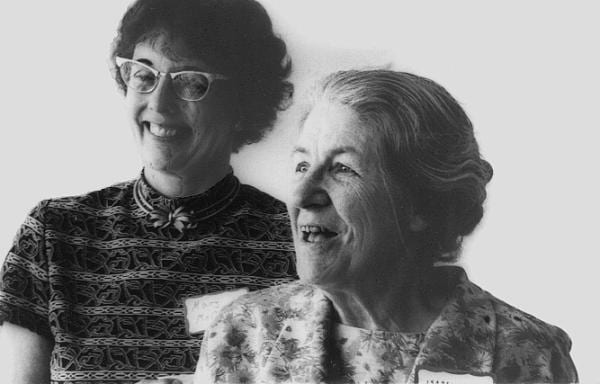
- Katherine Briggs and her daughter Isabel Myers.
This refinement aimed to clarify both the conscious and unconscious forces affecting behavior and to identify core personality traits that differentiate among people. Myers and Briggs added to Jung’s three, bi-polar dimensions of personality a fourth dimension grounded in his theory.
Compare MBTI and DISC: What are the Four Dimensions of MBTI?
As explained above, the Myers-Briggs Type Indicator comprises of four pairs and each individual tends to lean towards one in the pair rather than the other. This is called a Dichotomy. The questionnaire makes you choose between two answers, and your answer demonstrates which pair in the dimension you lean towards. Now let’s look into each of the four pairs.
Extroversion and Introversion:
This dimension discusses your preferred world. People either pay more attention to the external world of objects and people, or the inner world of ideas and feelings. Effectively do you prefer the outer world or your own inner world? This is also about where you draw your energy, from within (Internal) or external to you (E).
Sensing and Intuition:
This dimension discusses how you deal with information. When gathering information do you prefer to sense the basic information you take in through your five senses and process this for what it is, or do you prefer to use your intuition to interpret and add meaning to basic information? It can be said one is grounded in reality, the other in imagination. For example, someone who is more S, touches a hot stove and says, “That stove is hot and burning. I had better not touch that again.” Someone who is N, touches the hot stove and says, “That stove is hot, someone must have been using it. I wonder what they were cooking. Anyway, if I see something cooking, I will not touch the stove (because I assume it will be hot.)
Thinking and Feeling:
This dimension analyses how people attempt to make a decision. Using the thinking approach logic and objectivity is valued. So facts and numbers are assessed. Using the feeling approach personal values and subjectivity are emphasized. Does your mind initially go to the logic, numbers and behind the decision, or does it initially go to the people and special circumstances involved and the impact this has on your feelings.
Judgment and Perception:
This is the dimension Myers and Briggs added to Jung’s other three dimensions, and involves the structure of the outside world and how you deal with it. “Perception involves all the ways of becoming aware of things, people, happenings, or ideas and how this information is ordered to make sense of what is happening. Judgment involves all the ways of coming to conclusions about what has been perceived.” In dealing with the outside world, do you prefer to get things decided or do you prefer to stay open to new information and options? Judging people close the data gate and go with a response. Perceivers keep the flow open and change their perceptions as new information is delivered.
While both facets are present in every personality, Jung believed one is emphasized more than the other. In fact, an individual may use one facet consciously and with deliberate intention, while the other influences behavior only unconsciously.
Once the questionnaire is completed, your personality type will be given. This is in the form of a code with four letters, each indicating which pair in the dimension you leant towards. For example you could be an ISTJ, or an ESFP. The 16 possible types are shown below:
MBTI claims that certain types are more effective in roles such as leadership or certain types being more sporting than others. This is starkly different to what DISC is based on. DISC is grounded in the principle, that there is a time and place for each profile when it comes to being a leader. No one behavioral style is going to work all the time.
The same goes for being a successful athlete. We have some of the greatest athletes in the world on our database of clients and we can assure you, there is no pattern suggesting a D, I, S or C is more or less successful.
Compare MBTI and DISC: Advantages of MBTI
The main advantage of the Myers-Briggs Type Indicator is its potential for use as a self-awareness tool to comprehend what your actual personality is. This initially includes understanding your own personality type, and then comparing how you see the world, to how others in your environment see the world.
If understanding someone’s “personality” is your objective, then the MBTI is likely your best assessment and tool to you.
I am accredited in the use of MBTI and know what my four letters are in addition to my primary, secondary, tertiary and inferior functions are. I have sat my exams, passed and understand the inner workings of MBTI. It is a complicated model which many struggle to know unless significant time is spent learning. There is also no graphical interface to represent the various personalities making understanding others more challenging, although others see this as an advantage. (These are reasons we use DISC and find our coaches and athletes able to comprehend the model very quickly. For coaches and athletes, their primary role is not to become experts in profiling.)
Compare MBTI and DISC: Disadvantages of MBTI
As mentioned earlier, the MBTI is a 16 factor model and it is more complicated to grasp quickly and harder to remember. (Ask someone who has done the MBTI what they are and listen for their answer – often you get a quizzical look and then a rendition of a few different letters of the alphabet, some of which are in MBTI and sometimes not). You do need to spend significant time in learning MBTI and how to interpret and apply to your context.
While with DISC you can delve deeply into the theory and its application, yet at its core is a four quadrant model that most people can quickly grasp the basics in only a few minutes. This is very important in sport, both coaches, athletes and others.
MBTI is focused on ‘personality’ which is different to a focus on ‘behavior’. What is often most useful in improving performance, is to look at and work with someone’s behavior i.e. what they do (as opposed to personality and who they are). Obviously personality plays a major role in how someone behaves, but someone can change their behavior and benefit from better outcomes.
DISC is a behavioral measurement. DISC does not suggest you have to change your personality, just your behavior. We find this to be the critical factor in why DISC can deliver more useful outcomes for us as sports coaches. We never ask an athlete to change who they are, but coaches are constantly suggesting to an athlete how they can change their technique or behavioral approach to create better results. Ultimately, behavior is flexible, personality is not. Your DISC profile is never a prison which has to dictate everything you do. DISC aims to give you a choice of ways to behave each of which results in various outcomes depending on the situation.
Mentioned earlier is the fact that there is also no graphical interface within MBTI to represent the various personalities making understanding others more challenging although some people see this as an advantage.
DISC is measured on a scale, so you can understand your score on each measure of Dominance, Influence, Steadiness, and Conscientious.
Most importantly, you have to ask yourself whether you believe a select few can be leaders or leaders can be developed. MBTI claims that certain personality types are more effective in roles such as leadership or certain personality types being more sporting than others.
This is starkly different to what DISC is based on. DISC is grounded in the principle, that there is a time and place for each profile when it comes to being a leader. No one behavioral style is going to work all the time. The same goes for being a successful athlete. We have some of the greatest athletes in the world on our database of clients and we can assure you, there is no pattern suggesting a D, I, S or C is more or less successful.
A disadvantage to the Myers-Briggs Type Indicator is that little information is provided for the respondent to aid them in interpretation. This creates significant difficulties with questions which are vague or with respondent’s who are answering in a second language.
The Myers-Briggs Type Indicator is not designed for use in a hiring process. Although profiling potential applicants’ personalities is becoming a more conventional practice is business, using the wrong kind of profile can make the results unreliable. The MBTI was designed for training and development process, not for weeding through applicants.
If you are not familiar with personality profiling, and how it can be utilized in a variety of ways including sport, it can be hard to find relevant information. Hopefully you have found everything you wanted to know about the Myers-Briggs Type Indicator in this article. However if you have any additional questions please Contact Us!
If you would like more information on how we utilize DISC Assessments, go to:
The Athlete Assessments’ DISC Profiles are specifically tailored to sport and the roles within this context. There is the AthleteDISC for athletes and players, the CoachDISC for coaches and trainers and the Sports ManagerDISC for team managers, sports administrators and other sports professionals.
At Athlete Assessments, we’re here to provide you with excellence in service and to help you be your best. If there is anything we can assist you with, please Contact Us.
Recommended Articles
As we all know, our personality impacts our behavior and as such has a direct impact on our coaching style. However, unlike personality, which is relatively stable, a coach’s style is a preferred pattern of behavior and as such it can be changed or adapted depending on the situation. Most of all though, a coach’s style can be changed or adapted if they are aware of their style preference and what style will give them the results they need.
In a team it can be difficult to understand why tension can develop between some athletes, yet other athletes gel from start. In this article we discuss the team tension between the different DISC styles in a team environment, due to their different priorities in pace and relationships.
Historical and contemporary research reveals more than a dozen models and methods of measuring our behaviors and profiling personalities. From the Greek philosophers to modern psychologists, one common thread of many of these models, is the grouping of behavior and personality into four basic categories.


